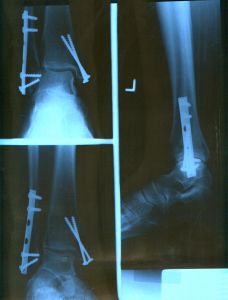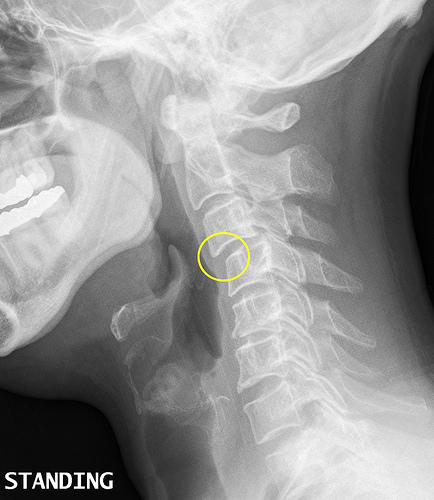 Florida’s dangerous instrumentality doctrine imposes vicarious responsibility upon the owner or other possessor of a motor vehicle who voluntarily entrusts it to another for any subsequent negligent operation which injures a member of the traveling public. Jackson v. Hertz Corporation, 590 So.2d 929, 937. See Kraemer v. General Motors Acceptance Corp., 572 So.2d 1363 (Fla. 1990); Susco Car Rental Sys. v. Leonard, 112 So.2d 832 (Fla. 1959); Lynch v. Walker, 159 Fla. 188, 31 So.2d 268 (1947); Southern Cotton Oil Co. v. Anderson, 80 Fla. 441, 86 So. 629 (1920); Anderson v. Southern Cotton Oil Co., 73 Fla. 432, 74 So. 975 (1917).
Florida’s dangerous instrumentality doctrine imposes vicarious responsibility upon the owner or other possessor of a motor vehicle who voluntarily entrusts it to another for any subsequent negligent operation which injures a member of the traveling public. Jackson v. Hertz Corporation, 590 So.2d 929, 937. See Kraemer v. General Motors Acceptance Corp., 572 So.2d 1363 (Fla. 1990); Susco Car Rental Sys. v. Leonard, 112 So.2d 832 (Fla. 1959); Lynch v. Walker, 159 Fla. 188, 31 So.2d 268 (1947); Southern Cotton Oil Co. v. Anderson, 80 Fla. 441, 86 So. 629 (1920); Anderson v. Southern Cotton Oil Co., 73 Fla. 432, 74 So. 975 (1917).
Continue reading
Articles Posted in Personal Injury
Florida Personal Injury Law: Releasing Active Tortfeasors
Through legal doctrines such as those pertaining to dangerous instruments (e.g., motor vehicles), principals & agents, and employers & employees, passive tortfeasors can be held liable for the active negligence of others. An active tortfeasor is the person whose negligence has caused an accident, while a passive tortfeasor is the person or company made liable through one or more legal doctrines such as those mentioned above. This type of liability on the part of the passive tortfeasor is known as vicarious liability.
Examples: #1: Through the dangerous instrumentality doctrine, the owner of a motor vehicle will be liable for damages caused by the permissive driver of that vehicle. #2: An employer will be responsible for the damages caused by its employee in the course and scope of the employment. (Our law firm is currently in suit against Mears Destination Services, Inc. for an accident caused by the driver of one of its buses. Mears is vicariously liable under both examples.)
For various practical and strategic reasons, it is sometimes beneficial for the Plaintiff (the party harmed) to reach a settlement with the active tortfeasor, while the passive tortfeasor remains a Defendant in the case. Can this be done without [the Plaintiff] losing the right to continue his or her fight against the passive tortfeasor? Although it may seem counterintuitive, the answer is Yes.
This wasn’t always so. It took statutes then court opinions based on the statutes to change the law. The first positive Florida statute was enacted in 1957, while the first good appellate decision interpreting the statute was Hertz Corp. v. Hellens, 140 So.2d 73 (Fla. 2d DCA 1962). Since then, Florida law has become even clearer on the subject through the following authorities:
Florida Statutes:
- 768.041 Release or covenant not to sue.
- 46.015 Release of parties.
- 768.31(5) Release or covenant not to sue.
Case Law:
- Florida Tomato Packers, Inc. v. Wilson, 296 So. 2d 536 (Fla. 3d DCA 1974) (The plaintiff settled before trial and executed a release in favor of the only active tortfeasor).
Another aspect that was, but is no longer problematic when settling with active tortfeasors concerns dismissals with prejudice. In JFK Medical Center, Inc. v. Price, 647 So. 2d 833 (Fla. 1994), a medical malpractice case, the Plaintiff settled with the active tortfeasor doctor, agreeing to dismiss the case against him with prejudice. The passive hospital, which was a party due to its alleged employer/employee relationship with the doctor, moved for summary judgment on the theory of res judicata, arguing that the claim against it was barred by the active tortfeasor being dismissed with prejudice. The trial court granted the hospital’s motion. The 4th DCA reversed the trial court and the Florida Supreme Court approved the appellate court’s decision, holding “that a voluntary dismissal of the active tortfeasor, with prejudice, entered by agreement of the parties pursuant to settlement, is not the equivalent of an adjudication on the merits that will serve as a bar to continued litigation against the passive tortfeasor.” 647 So. 2d at 834.
Continue reading
Florida Law: Maximize Recovery by Obtaining Assignment of Subrogation Rights
 Job one of lawyers who represent individuals who have suffered personal injuries and/or property damage losses is to maximize the client’s recovery. The conventional thinking is that the recovery in every case is limited by the measure of actual damages, in other words, the recovery cannot exceed the loss.
Job one of lawyers who represent individuals who have suffered personal injuries and/or property damage losses is to maximize the client’s recovery. The conventional thinking is that the recovery in every case is limited by the measure of actual damages, in other words, the recovery cannot exceed the loss.
Surprisingly, this is a rule that can be broken … with a proviso.
In Despointes v. Florida Power Corporation, 2 So.3d 360 (2nd DCA 2008), a person who was paid $224,567.66 by her own insurance company, CIGNA, for fire damage, was able to pursue a claim for damages, through her estate, against a third party for the amount already recovered from the insurance company.
The device used for this opportunity was an assignment from CIGNA of its subrogation/reimbursement right.
The CIGNA policy provided for the right of subrogation against any third party recovery. This right authorized CIGNA to pursue a claim against the third party responsible for causing the house fire for the amount it paid to its insured. Instead of pursuing the claim, it assigned the right to its insured.
Thereafter, the insured sued the third party, Intermatic, alleging that the fire had been caused by a defective surge protector. The Defendant argued that the insured was not allowed to recover the money she had already received.
The trial court agreed. The Second District Court of Appeal did not.
Continue reading
Effective Ways of Demonstrating Serious Injuries in Personal Injury Cases
 The most important job of every personal injury lawyer is to maximize the amount of his or her client’s monetary recovery. The damage elements of every personal injury case are “pain & suffering” and economic damages (which includes lost wages, loss of earning capacity, out-of-pocket expenses, and past and future medical expenses). The nature and extent of the injuries bear on every element of damages. Accordingly, effectively demonstrating the nature and extent of the injuries is a critical component in every personal injury case. Various methods are available.
The most important job of every personal injury lawyer is to maximize the amount of his or her client’s monetary recovery. The damage elements of every personal injury case are “pain & suffering” and economic damages (which includes lost wages, loss of earning capacity, out-of-pocket expenses, and past and future medical expenses). The nature and extent of the injuries bear on every element of damages. Accordingly, effectively demonstrating the nature and extent of the injuries is a critical component in every personal injury case. Various methods are available.
Although medical illustrations, both generic and case-specific, are the traditional way of demonstrating injuries, they continue to serve a convincing role in presenting evidence in today’s high tech world. Generic illustrations are less costly and can be used in other cases, but may have less impact than case-specific demonstrations. For spine injuries, showing a summary of pain management injections is effective. The exhibit will visually show every date injections were administered, along with the location, size, and shape of each needle and syringe entering the spine. To have this chart made, the medical illustrator must be provided with the medical records containing the injections information or a summary detailing the information.
Continue reading
Florida Law: Pre-Incident Waivers Precluding Actions Based on Subsequent Negligence
 One would hope and expect in a society purporting to be civilized, that the negligence of any person or company could not be waived before it happened. Astonishingly, Florida law allows just that: pre-accident releases/waivers barring actions based on the subsequent negligence of the released party.
One would hope and expect in a society purporting to be civilized, that the negligence of any person or company could not be waived before it happened. Astonishingly, Florida law allows just that: pre-accident releases/waivers barring actions based on the subsequent negligence of the released party.
In other words, Florida law sanctions the equivalent of the Monopoly game, “Get out of Jail Free” pass to those whose wrongoing may injure or kill others.
Cognizant of the tremendous consquences of this law – for example, no hope of compensation for a catastrophically injured person – Florida courts have at least decided that contracts which purport to release or indemnify a party for its own negligence are looked upon with disfavor and will not be enforced unless the instrument clearly and specifically provides for a limitation or elimination of liability for such acts. University Plaza Shopping Center v. Stewart, 272 So. 2d 507, 511 (Fla. 1973). Moreover, it may be settled law that the word “negligence” must appear in the release. See, Bender v. Caregivers of America, Inc., 42 So.3d 893 (Fla 4th DCA 2010); Travent, Ltd. v. Schecter, 718 So. 2d 939, 940 (Fla. 4th DCA 1998); Witt v. Dolphin Research Ctr., Inc., 692 So. 2d 27, 28 (Fla. 3d DCA 1991); Rosenberg v. Cape Coral Plumbing Inc., 920 So. 2d 61, 66 (Fla. 2d DCA 2005); and Levine v. A. Madley Corp., 516 So. 2d 1101 (Fla. 1st DCA 1987).
Continue reading
Florida Civil Law: Liability for Injuries Caused by Broken Chairs
 Accidents caused by broken chairs are not uncommon. In some cases, the injuries can be severe (e.g., broken bones; herniated intervertebral discs). Through normal wear and tear, defects can develop that create conditions for imminent accidents. To avoid these dangerous situations, it is necessary to be reasonably observant and even pro-active with regard to determining the condition of chairs. This is especially so for commercial enterprises catering to the public.
Accidents caused by broken chairs are not uncommon. In some cases, the injuries can be severe (e.g., broken bones; herniated intervertebral discs). Through normal wear and tear, defects can develop that create conditions for imminent accidents. To avoid these dangerous situations, it is necessary to be reasonably observant and even pro-active with regard to determining the condition of chairs. This is especially so for commercial enterprises catering to the public.
In Fontana v. Wilson World Maingate, 717 So. 2d 199 (Fla. 5th DCA 1998), Fontana, while a guest of the defendant/appellee’s hotel, sat in a chair which was defective causing it to collapse and injure her. The defendant did not deny that the chair was defective. However, at trial it argued that the case should be dismissed because there was no evidence that it knew or reasonably should have known of the defect. The trial judge agreed, leading to a directed verdict in favor of the defendant.
Continue reading
Case Law Summary of Florida Employer v. Independent Contractor Liability
 McCall vs. Alabama Bruno’s, Inc., 647 So.2d 175 (Fla. 1st DCA 1994): Florida follows the general rule that the employer of an independent contractor is not liable for the contractor’s negligence because the employer has no control over the manner in which the work is done, except when one of three exceptions apply. Those exceptions involve:
McCall vs. Alabama Bruno’s, Inc., 647 So.2d 175 (Fla. 1st DCA 1994): Florida follows the general rule that the employer of an independent contractor is not liable for the contractor’s negligence because the employer has no control over the manner in which the work is done, except when one of three exceptions apply. Those exceptions involve:
- Negligence in selecting, instructing or supervising the contractor;
- Non-delegable duties arising out of some relation toward the public or the particular plaintiff;
- Work which is specially, peculiarly, or “inherently” dangerous.
Peculiar does not mean that the risk must be one which is abnormal to the type of work done, or that it must be an abnormally great risk, but instead refers to a special recognizable danger arising out of the work itself. In order for the vicarious liability rules to apply, it is not essential that the work which the contractor is employed to do be in itself an extra-hazardous or abnormally dangerous activity, or that it involve a very high degree of risk to those in the vicinity. It is sufficient that it is likely to involve a peculiar risk of physical harm unless special precautions are taken, even though the risk is not abnormally great. A “peculiar risk” differs from common risks to which persons in general are commonly subjected by the ordinary forms of negligence which are usual in the community. It must involve some special hazard resulting from the nature of the work done, which calls for special precautions. Restatement (2d) Torts Sect. 416. Rules imposing vicarious liability on employers for the acts of independent contractors arise “in situations where, for reasons of policy, the employer is not permitted to shift the responsibility for the proper conduct of the work to the contractor” and it is commonly stated that “the employer is under a duty which he is not free to delegate to the contractor.” Nondelegable duties have been found under Florida law to arise out of “inherently dangerous activity,” activity involving “inherently dangerous elements,” or out of the creation of an “inherently dangerous condition.”
Webb vs. Priest, 413 So.2d 43 (Fla. 3rd DCA 1982): The general rule in Florida is that an owner is not liable for the acts of an independent contractor except when (a) the activity is inherently dangerous (see Ferguson vs. Westinghouse, 408 So.2d 659 (Fla. 3rd DCA 1981)); (b) the owner/employer had contractually assumed responsibility (Levitz vs. Continental Equities, 411 So.2d 221 (Fla. 3rd DCA 1982)); (c) there is legally imposed responsibility (Concord Florida vs. Lewin, 341 So.2d 242 (Fla. 3rd DCA 1977)); (d) the owner/employer knew or had reason to know that the independent contractor would not perform in a satisfactory manner (Williams vs. Wometco Enterprises, 287 So.2d 353 (Fla. 3rd DCA 1974)); (e) where the independent contractor had apparent authority to act on behalf of the owner/employer (Thomkin Corp. vs. Miller, 156 Fla. 388, 24 So.2d 48 (Fla. 1945).
Continue reading
Florida Hospitals Refuse to Bill Medicare in Civil Cases
 Once a hospital is paid by Medicare, it is barred from balance-billing the patient except for a small co-payment. Because Medicare pays less than “reasonable value” for services charged by Florida hospitals, where a hospital believes that the patient is likely to receive a monetary recovery in a personal injury case, it may refuse to bill Medicare. Hospitals do this hoping to receive more from personal injury cases than from Medicare.
Once a hospital is paid by Medicare, it is barred from balance-billing the patient except for a small co-payment. Because Medicare pays less than “reasonable value” for services charged by Florida hospitals, where a hospital believes that the patient is likely to receive a monetary recovery in a personal injury case, it may refuse to bill Medicare. Hospitals do this hoping to receive more from personal injury cases than from Medicare.
Unfortunately, this conduct is legal. There appear to be no rules, statutes or case law barring this conduct.
The law is less clear with regard to Medicaid. Some believe that Medicaid must be billed, while others do not. As with Medicare, hospitals are not allowed to balance-bill after being paid by Medicaid.
Where Medicare or Medicaid pay and a personal injury recovery follows, both will be reimbursed from the recovery. Accordingly, neither (namely, taxpayers) loses out.
Hence, where hospitals refuse to bill Medicare, the consumer/patient ends up paying more.
Continue reading
Florida Personal Injury Litigation: Compulsory Medical Exam (CME) & Invasive Procedures (e.g., X-rays)
 Florida Rule of Civil Procedure (FRCP) 1.360(a)(1)(A) allows the defendant in a personal injury case to have a qualified expert of its own choosing perform a medical examination on the plaintiff with regard to the injury or injuries in controversy. This type of examination has come to be referred to as a “compulsory medical examination,” or “CME.”
Florida Rule of Civil Procedure (FRCP) 1.360(a)(1)(A) allows the defendant in a personal injury case to have a qualified expert of its own choosing perform a medical examination on the plaintiff with regard to the injury or injuries in controversy. This type of examination has come to be referred to as a “compulsory medical examination,” or “CME.”
The notice of the examination is served by the defendant on the plaintiff’s attorney. The Rule provides that the request “shall specify a reasonable time, place, manner, conditions, and scope of the examination….” The reason for the specificity requirement is to give the plaintiff the opportunity to impose objections to the request if necessary.
The question often arises as to whether or not the CME doctor is allowed to perform invasive testing such as X-rays. The answer is a conditional Yes.
In Schagrin v. Nacht, 683 So. 2d 1173 (Fla. 4th DCA 1996), paragraph 4 of the defendant’s request read as follows:
The scope of the examination is of a urological nature concerning conditions of the Plaintiff relating to the accident which is the subject matter of this lawsuit. The exam shall include any such tests that the doctor feels are necessary for a complete and thorough examination of the Plaintiff.
Dealing With Federal ERISA Under Florida Law in Personal Injury & Workers’ Compensation Cases
Florida lawyers who represent individuals injured in accidents must be aware that some of the proceeds recovered in a case may have to be reimbursed to entities who have paid for accident-related medical care. If benefits were paid through an individual health insurance plan, whether and to what extent the carrier has a right of subrogation is a matter of contract (the insurance policy) and state law, Florida Statute 768.76. With regard to group policies provided in connection with employment, it was long believed that subrogation rights were exclusively a matter of contract, the Plan Summary, and federal law, the Employment Retirement Income Security Act (ERISA). It was felt that Florida Statute 768.76 played no role in determining group insurance subrogation rights.
Coleman v. Blue Cross and Blue Shield of Alabama, Inc. So.3d , 35 FLW D2718 (Fla. 1st. DCA 12-8-2010) may have changed the landscape.
After successfully settling a personal injury action in federal court, Coleman (the plaintiff and a member of a group plan) filed a complaint in state court requesting a declaratory judgment prohibiting the insurer from seeking subrogation against the settlement proceeds. The plaintiff’s complaint alleged that the insurer had not met the pre-subrogation requirements of Florida’s Collateral Source Statute Section 768.76(7). Therefore, according to the plaintiff, Blue Cross Blue Shield had waived its right to subrogation.
Continue reading
 Florida Injury Attorney Blawg
Florida Injury Attorney Blawg

